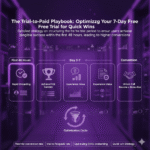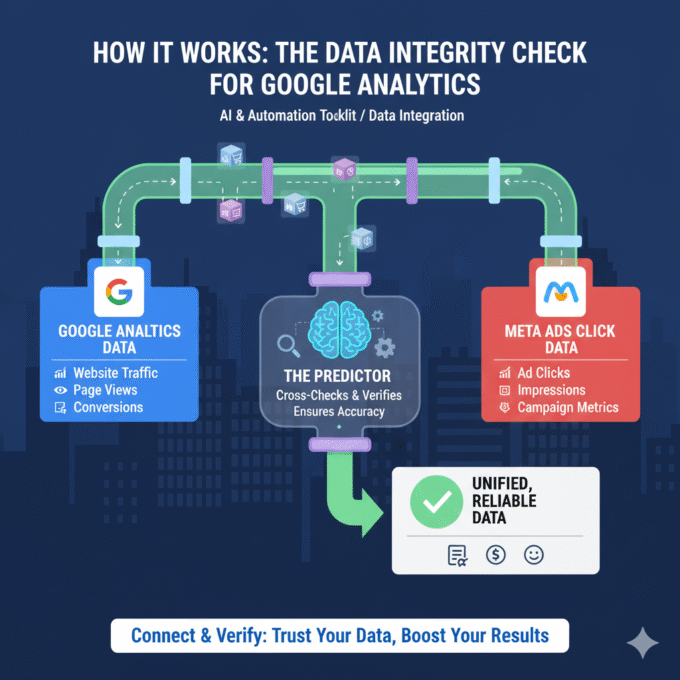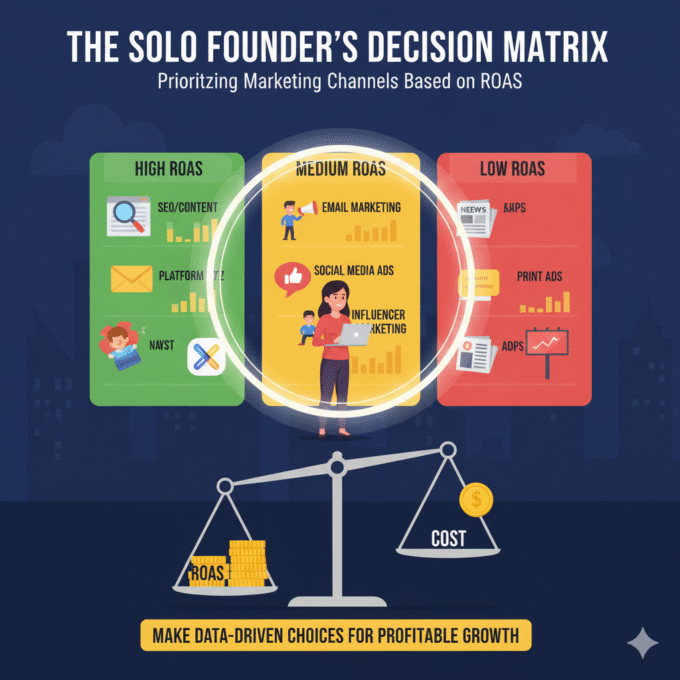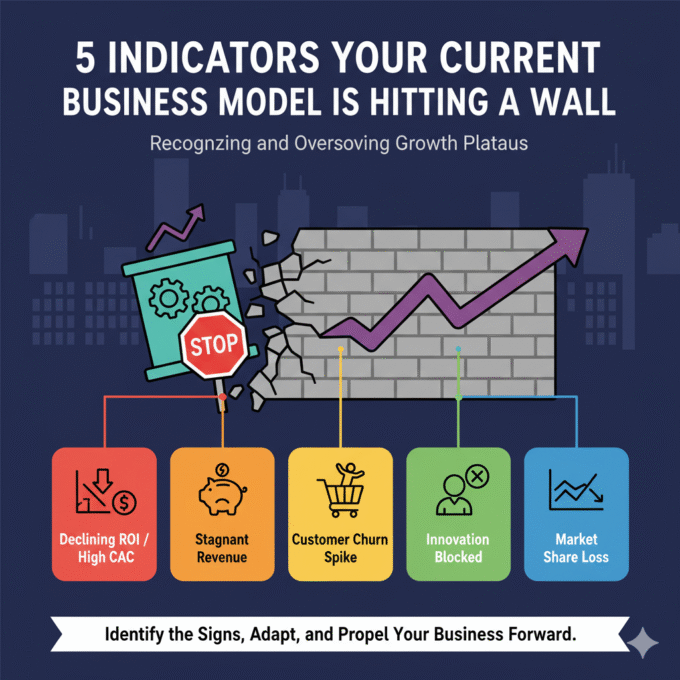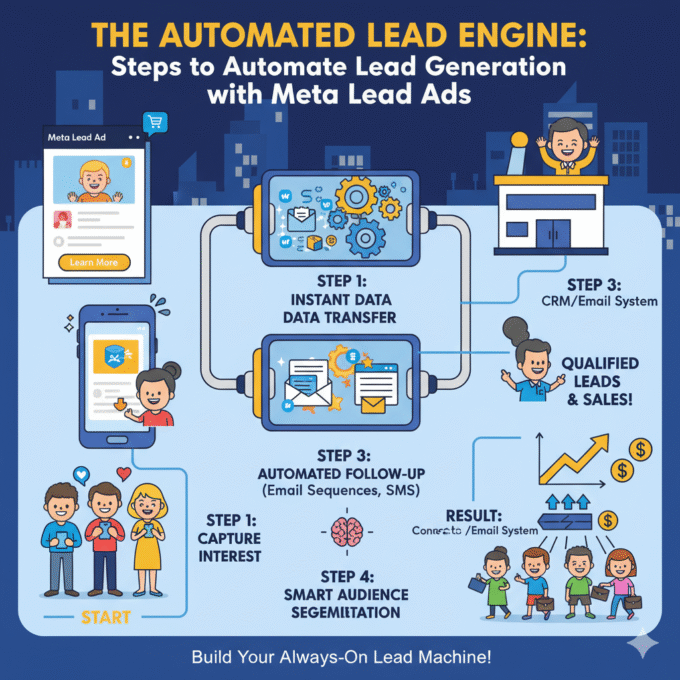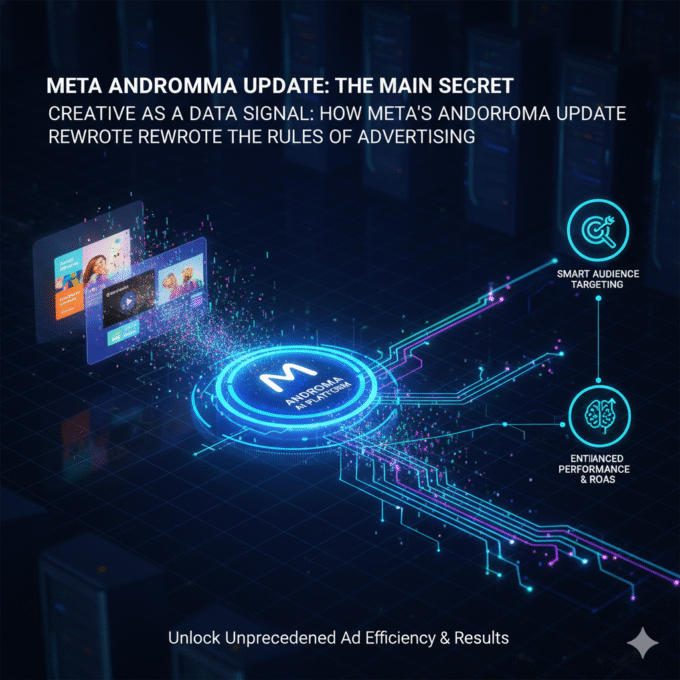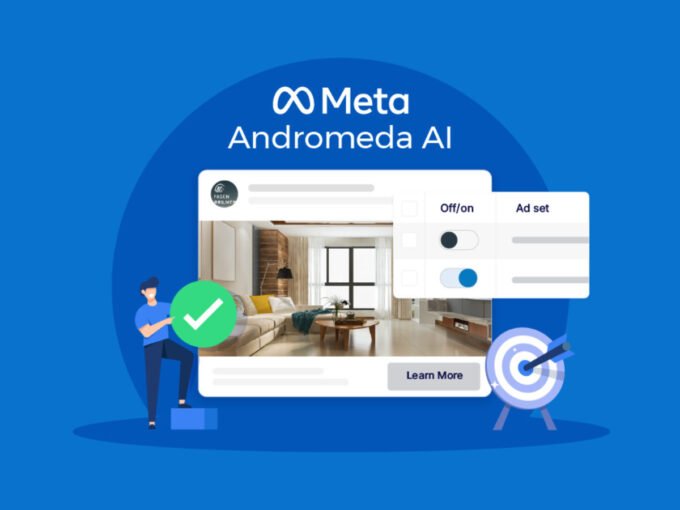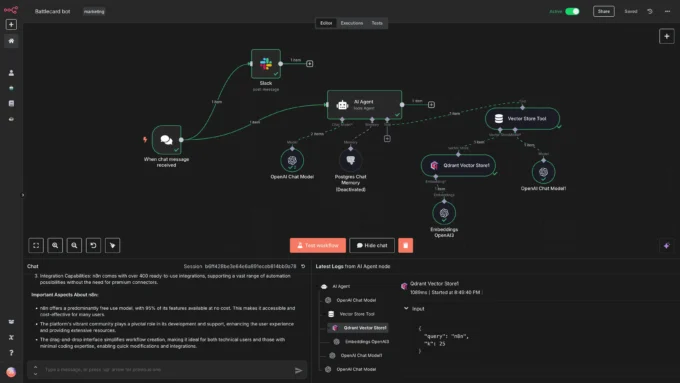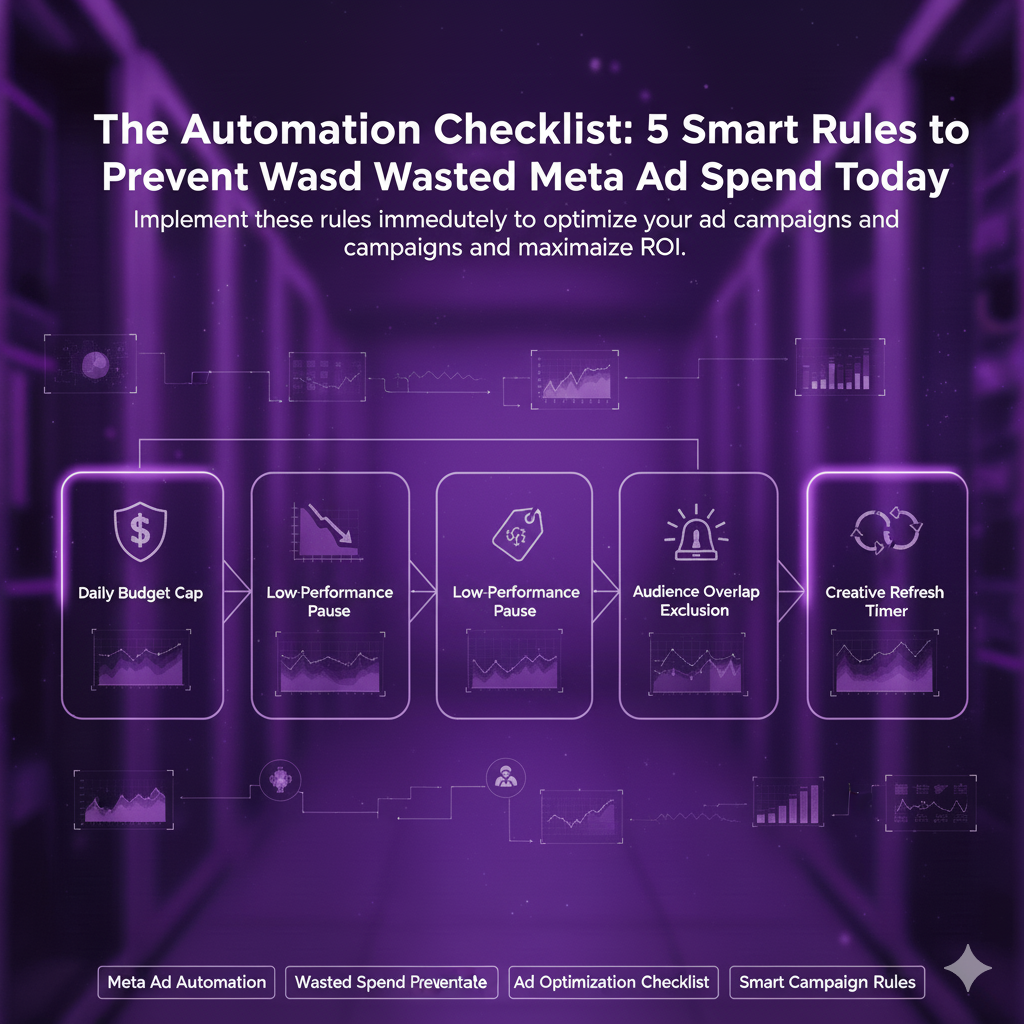
The Automation Checklist: 5 Smart Rules to Prevent Wasted Meta Ad Spend Today
September 28, 20254 Mins read28 ViewsThe Automation Checklist: 5 Smart Rules to Prevent Wasted Meta Ad Spend Today

Every digital marketer knows the feeling: you launch a new Meta (Facebook/Instagram) ad campaign with high hopes, only to check your account a few hours later and see a low-performing ad set burning through your budget with zero conversions. It’s the silent killer of ad accounts, a constant drain on your profits that demands round-the-clock vigilance.
But what if you didn’t have to be a slave to your ad dashboard? What if you could put your campaigns on autopilot, allowing them to optimize themselves in real-time, 24/7?
This is the power of ad automation. It’s the closest thing you’ll get to having a tireless, hyper-efficient analyst monitoring your campaigns at every moment. Manual management is simply no match for the speed at which ad performance can change. A campaign that performed well in the morning can spike in cost by the afternoon, and without a system in place to respond instantly, you’re hemorrhaging money.
In this guide, we’ll give you a direct, five-rule checklist that you can implement immediately to automate wasted ad spend. These rules are the foundation of any ad account optimization strategy and are the first step toward building a truly intelligent advertising machine.
The 5-Rule Automation Checklist
While Meta’s native rules offer a solid starting point, the most powerful and flexible automations are created with a dedicated tool that goes beyond the basics. Think of these rules as the core functions of a tool like AdGuard AI—a simple, powerful interface designed to protect your profits without the complexity.
Here is the exact type of automation rules that can transform your account:
Rule 1: The “CPA Safety Net” Rule
This is the non-negotiable first rule for any conversion-focused campaign. It’s designed to prevent you from overspending on acquisitions when your Cost Per Acquisition (CPA) skyrockets. This is a common occurrence due to audience saturation, rising competition in the ad auction, or a sudden change in user behavior.
The Rule:
- Condition: If “Cost per Purchase” > Your Target CPA (e.g., $50)
- And: If “Amount Spent” > A Test Threshold (e.g., $200)
- Action: Then “Pause Ad Set”
- Run Frequency: Continuously (every 30 minutes)
Why It Works: This rule acts as a vigilant guardian, ensuring that if an ad set begins to burn through your budget without generating conversions at a profitable rate, it is immediately paused. This protects your cash flow and allows you to reallocate that budget to more successful campaigns.
Rule 2: The “Over-Delivery Safeguard” Rule
Have you ever launched a campaign, only to find that it spent its entire daily budget in the first few hours? This is a common problem that leads to ad fatigue and missed opportunities for conversions later in the day when your audience is more active. This rule brings a more intelligent, strategic approach to smart bidding strategies.
The Rule:
- Condition: If “Daily Ad Spend” > 90% of your Ad Set Daily Budget
- And: “Time of Day” is Before 6:00 PM
- Action: Then “Reduce Daily Budget” by 25%
- Run Frequency: Once every 2 hours
Why It Works: This rule helps to pace your ad spend throughout the day, preventing your ads from over-delivering early. It helps to maintain a more consistent presence in the ad auction and can improve overall campaign performance by ensuring your ads are shown to your audience when they are most likely to convert.
Rule 3: The “Engagement Fall-Off” Rule
Not all clicks are created equal. Sometimes, an ad’s creative simply stops resonating with its target audience. The ads might still be getting impressions, but the engagement—the most critical signal to Meta’s algorithm—is gone. This rule is designed to catch this problem before it eats into your budget.
The Rule:
- Condition: If “Click-Through Rate (Link)” < 1.0%
- And: “Impressions” > 10,000
- And: “Ad Relevance Diagnostics – Quality Ranking” is “Below Average”
- Action: Then “Pause Ad”
- Run Frequency: Continuously (every 30 minutes)
Why It Works: A low CTR is a clear signal that your ad creative is no longer relevant or compelling. This rule ensures you’re not paying to show an ad that no one is clicking on. By linking it to a high impression count, you give the ad a chance to get through its learning phase before it’s flagged as a poor performer. This is a crucial step in building topic authority fast for your campaign creative.
Rule 4: The “Under-Performing Creative” Rule
You’ve got a brand new creative that’s getting plenty of clicks, but for some reason, it’s not leading to conversions. This could be due to a misalignment between your ad copy and your landing page, or it could be that the ad is attracting low-quality traffic. This rule quickly identifies and eliminates those ads.
The Rule:
- Condition: If “Add to Cart” < 1
- And: “Link Clicks” > 150
- And: “Time Since Creation” is Greater than 72 hours
- Action: Then “Pause Ad”
- Run Frequency: Once per day
Why It Works: This rule forces you to make a data-driven decision, not an emotional one. If an ad has received a significant number of clicks but hasn’t generated a single “add to cart,” it’s likely a creative that is attracting window shoppers, not buyers. Pausing it early allows you to optimize your ad spend and reallocate that budget to creatives that are proven to convert.
Rule 5: The “Weekend Pause & Activate” Rule
For many businesses, ad performance changes dramatically on weekends. Your B2B lead generation campaigns might fall flat on Saturdays and Sundays, while your e-commerce ads may see a massive spike. Instead of waking up early on Monday to turn everything back on, you can automate this process.
The Rule:
- Condition: If “Day of the Week” is “Saturday” or “Sunday”
- Action: Then “Pause Campaign”
- Run Frequency: Once per day (at 12:00 AM)
And its counterpart:
- Condition: If “Day of the Week” is “Monday”
- Action: Then “Activate Campaign”
- Run Frequency: Once per day (at 5:00 AM)
Why It Works: This is a simple but powerful rule that saves you from manual work and ensures your budget is spent at the most optimal times. It’s a great example of how Meta Ads automation rules can handle the routine tasks so you can focus on more strategic initiatives.
The Ultimate Takeaway
These five rules are just the beginning. They are the essential guardrails that protect your campaigns from the most common and costly pitfalls. While Meta’s native tools allow for some of this functionality, a dedicated platform can unlock more advanced, nuanced automations—like conditional triggers based on multiple accounts, custom reporting, or predictive budget scaling.
By implementing this playbook, you’ll gain peace of mind knowing your campaigns are working for you, not against you. Stop wasting money and start using automation to build a smarter, more profitable ad account.
More News
The Data Integrity Check for Google Analytics
How It Works: The Data Integrity Check for Google Analytics In the...
October 21, 2025The Solo Founder’s Decision Matrix: Prioritizing Marketing Channels Based on ROAS
The Solo Founder’s Decision Matrix As a solo founder, your most precious...
October 21, 20255 Indicators Your Current Business Model is Hitting a Wall
5 Indicators Your Current Business Model is Hitting a Wall The success...
October 21, 2025The Automated Lead Engine: Steps to Automate Lead Generation with Meta Lead Ads
Steps to Automate Lead Generation with Meta Lead Ads Meta Lead Ads...
October 20, 2025META Andromeda update main secret
Creative as a Data Signal: How Meta’s Andromeda Update Rewrote the Rules...
October 20, 2025Meta Andromeda: The Next-Generation AI Engine for Performance Growth
I. Executive Summary: The Andromeda Paradigm Shift 1.1. Introduction to the AI...
October 14, 2025The Data Integrity Check for Google Analytics
How It Works: The Data Integrity Check for Google Analytics In the...
October 21, 2025The Solo Founder’s Decision Matrix: Prioritizing Marketing Channels Based on ROAS
The Solo Founder’s Decision Matrix As a solo founder, your most precious...
October 21, 20255 Indicators Your Current Business Model is Hitting a Wall
5 Indicators Your Current Business Model is Hitting a Wall The success...
October 21, 2025The Automated Lead Engine: Steps to Automate Lead Generation with Meta Lead Ads
Steps to Automate Lead Generation with Meta Lead Ads Meta Lead Ads...
October 20, 2025
